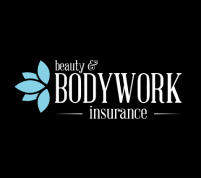Whether you are just starting out or if you have been in the massage industry for many years, it is important to make sure that you have good massage liability insurance. Unfortunately, there isn’t a lot of information online or elsewhere to help guide you in the purchasing process. For those without a solid understanding of insurance principles and terminology, buying a policy that fits your needs can be extremely frustrating.
With this blog post, we hope to ease some of your pain. We will explore several areas of consideration and help you identify the difference between a quality policy and one that falls short of the mark. While this isn’t a complete guide, it should be a good start in helping you know what things to look for and how to make the best decision for you.
1. Coverage
The first concept that we want to discuss is coverage. Coverage is one of the most important aspects of a good liability policy for massage therapists and it refers to the types of exposures that are “covered” under a given policy. The following are examples of coverage for your typical massage therapy policy:
- General Liability — coverage for bodily injury or property damage caused by direct or indirect actions of the insured person.
- Professional Liability — coverage for bodily injury or property damage that might arise from the services you provide to your client.
- Product Liability — coverage for bodily injury or property damage that might arise from the products you use on your clients at the time of service.
- Business Personal Property — items you use in your business; such as, supplies, equipment, and inventory.
While this is in no way a complete list, you can see why it would be difficult to know exactly what type of coverage you need. When looking at policies, it is important to compare them apples to apples. When a policy doesn’t have a particular coverage, that is the reason that the policy is less expensive.
2. Limits
Another important consideration when purchasing insurance is limits. Limits refer to the dollar amount designated to each individual coverage that your policy offers. For example, a typical professional liability limit might be anywhere from one million to two million dollars. This means that if you submit a claim and it is approved, the payout could be up to the limit for that particular coverage.
The best way to know if a policy has adequate limits is to compare it to the competition’s limits. Assuming that the coverages are similar, then it’s just a matter of looking at them side by side. If one policy has exceptionally low limits, you should consider going elsewhere for coverage. In contrast, if a policy has extremely high limits, you should continue looking at the other key factors, but it should move up to the top of your list.
3. Shared Limits vs Individual Limits
Shared limits and individual limits are terms used when you buy a group policy. Group policies are a master or generic policy that is provided for a specific industry; rather than writing unique policies for every individual, these companies provide a group policy to make prices more manageable for individuals. Massage therapists often buy group policies because of the convenience of time and cost. However, when you buy insurance as part of a group policy, you should know the difference between shared and individual limits.
Shared limits are when policyholders literally share the coverage limits with everyone in the group. While limits are typically higher in a shared limits, the money can be depleted quickly if there are too many policyholders. If you can imagine, sometimes group policies with shared limits can have thousands of policyholders, so if those individuals who share the limits with you exhaust all of the funds, you could be out of luck if you need to make a claim. The amount left could be insufficient or even worse, completely gone if you have to make a claim.
Individual limits are when each individual has their own limits on their policy; you do not share your limits with any of the other policyholders. This protects your coverage and guarantees you money when you need to file a claim. Individual limits may be lower compared to a shared limits policy, but you do not risk others using your money because only you can affect the available money. When looking at group policies, make sure your policy has individual limits so you have the coverage you need.
4. Extras
It is also important to investigate some of the other perks that come in addition to liability insurance. It is common in the massage insurance world for the main providers to offer some sort of perks along with their insurance. Some examples are: trade magazines, discounts at industry online retailers, and access to educational materials. For some, these are welcomed supplements to the insurance, but for others, they are just gimmicks.
Often times these add-ons can drastically increase the price of the policy. You should consider whether or not you are truly going to use those things or if you are just looking to have the liability insurance. There is no right or wrong answer, it just depends on whether you feel like it adds value or not.
5. Price
The last thing to consider is the most obvious of all and that is price. We briefly talked about price when we discussed the extras, but once you have narrowed your options down to a few and looked at all the other factors, then your next step should be to look at how much it is going to cost. If you have done the other comparisons properly, then you shouldn’t be concerned about buying the least expensive policy because you know that it stacks up well against the competition. Least expensive doesn’t mean it’s cheap.
Choosing massage liability insurance can often times be hard and frustrating; and for that reason, we have written this guide to help ease some of your pain. We hope that it has cleared up any misconceptions or misunderstandings that you may have had prior to reading this blog post. For information about purchasing massage liability insurance, click here or call us at 1-888-568-0548.







